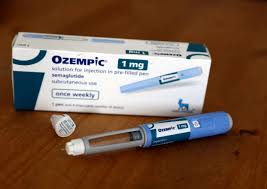Obesity and Metabolic Surgery Society of India (OSSI) Unveils Comprehensive Guidelines for Obesity Management
Obesity and Metabolic Surgery Society of India (OSSI), the largest association of surgeons and integrated health members addressing obesity, announced the release of comprehensive guidelines for the “management of obesity”. These guidelines are a crucial

Obesity and Metabolic Surgery Society of India (OSSI), the largest association of surgeons and integrated health members addressing obesity, announced the release of comprehensive guidelines for the “management of obesity”. These guidelines are a crucial response to the rising concerns around obesity in the Indian population and aim to mitigate the prevailing confusion in obesity management. These were compiled by Dr. Aparna Govil Bhasker and approved by the immediate Past President- Dr. Praveen Raj, President- Dr. Randeep Wadhawan and the executive committee of OSSI 2022-24.
Background: Obesity was recognized as a disease by the National Institutes of Health (USA) 25 years ago. Following this, in 2013, the American Medical Association officially declared it a disease requiring treatment and prevention efforts. It is a progressive condition that is linked to various adverse health conditions, including diabetes, hypertension, heart disease, sleep apnoea, joint issues, cancers, reproductive disorders etc. It is crucial to understand the multifaceted nature of obesity, encompassing genetic, environmental, metabolic and hormonal factors that extend beyond conventional lifestyle adjustments.
When treated inadequately or if left untreated, the progressive nature of obesity can harm almost every organ in the human body and potentially reduce the lifespan.
Statistics: According to the National Family Health Survey (NFHS), between 2019 and 2021, approximately 6.4% of women and 4.0% of men aged 15-49 in India are living with obesity. The direct healthcare cost associated with obesity in India is estimated to reach a staggering 8.43 billion USD, covering medical expenses directly related to obesity and its associated health conditions.
The rationale for guidelines for obesity:
“These guidelines intend to help in officially recognizing obesity as a disease rather than just a lifestyle issue. This recognition is vital in changing public perception and promoting a standardized and consistent medical approach to its management”, said Dr. Randeep Wadhawan.
“Obesity exists on a spectrum, with varying degrees of severity. These guidelines will provide a framework for classifying obesity based on severity and recommend appropriate treatment accordingly, to align with the seriousness of the condition”, said Dr. Aparna Govil Bhasker.
Dr. Praveen Raj said, “Guidelines contribute to the efficient functioning of the healthcare system by providing a clear roadmap for diagnosis, treatment, and follow-up. This can lead to better resource allocation, reduced healthcare costs, and improved overall system efficiency”.
OSSI Guidelines: The OSSI guidelines provide a treatment matrix based on the grade of obesity, assisting healthcare providers in making informed decisions for tailored interventions. The approach recognizes the complexities and risks associated with different grades of obesity, optimizing outcomes and improving overall management.
General Guidelines for Treatment Modality Selection:
- Obesity is a complex condition and hence a single therapy may be insufficient for its management necessitating a comprehensive approach combining multiple therapies for long-term success.
- Healthy diet, exercise, behavior modification, and psychological support are foundational for all obesity treatment methods.
- Selection of treatment modality should prioritize maximal clinical benefit in terms of weight loss and overall quality of life while upholding organ function integrity.
- Clinically significant weight loss is defined as ≥ 5% of the baseline weight. Weight loss outcomes after various therapies are listed as under:
o Diet and lifestyle modification: 4 to 6% total body weight loss
o Anti-obesity mediations: 5 to 20% total body weight loss
o Endoscopic bariatric therapies: 13- 20% total body weight loss
o Bariatric and metabolic surgery: up to 40% or more total body weight loss
- The results of any therapy for weight loss must be reviewed every 3 months and where there is no benefit/progression even after 6 months, escalation of therapy to the next step in treatment is necessary.
Guidelines:
- Obesity management necessitates coordinated teamwork to address the physical, metabolic, psychological, and social dimensions of this condition.
- The multi-disciplinary team treating patients with obesity includes- Primary care physicians, registered dietitians/qualified nutritionists, physical therapists, behavioral therapists, diabetologists/endocrinologists, bariatric endoscopists, and bariatric/metabolic surgeons. Other specialists such as hepatologists, cardiologists, and nephrologists may be included as and when the need arises.
- Insights provided by the Edmonton Obesity Staging System (EOSS) must be integrated with BMI-based classification and waist circumference, to provide a more holistic approach to obesity classification.
- Treatment must be tailored to the individual and recommended as per their unique health profile.
- If weight surpasses the recommended target range as per the height, individuals should promptly seek guidance from primary healthcare practitioners, registered dieticians, nutritionists, or exercise specialists.
- Diet and lifestyle modification is recommended as a standalone treatment option for:
o Individuals with lower degrees of obesity (Class 1/Stage 0) or obesity-related health risks.
- “Pharmacotherapy (Anti-obesity/Weight loss medications) or endoscopic bariatric procedures like intra-gastric balloon or endoscopic sleeve gastroplasty (ESG); along with diet and lifestyle modification” can be advised as a primary treatment option for:
o Individuals who have not attained ≥ 5% loss of their baseline weight despite undergoing 6 months of diet and lifestyle interventions or are developing obesity-related co-morbidities despite diet and lifestyle modification.
o Individuals with
ü BMI ≥ 30 kg/m² or BMI ≥ 27 kg/m² with comorbidities.
ü For Asian population: BMI ≥ 27.5 kg/m² or ≥ 25 kg/m² with comorbidities (Obesity Class 1/Stage 1).
o Individuals who do not wish to, do not have access to, or are medically unfit for bariatric/metabolic surgery.
o To downstage super-super obese/high-risk patients in whom bariatric/metabolic surgery may not be feasible as a first-stage procedure.
o Weight loss medications must be prescribed by a qualified healthcare practitioner in patients with the absence of contraindications.
o Eligible individuals should be motivated and committed to “long-term and potentially life-long use of AOMs” along with diet and lifestyle modification.
- As per the guidelines of OSSI, bariatric/metabolic surgery is recommended as a primary treatment option for obesity for:
o Patients with a BMI ≥ 35 Kg/m2, with/without the presence of any obesity-related co-morbidity.
o Patients with a BMI ≥ 30 Kg/m2, in the presence of 2 or more obesity-related co-morbidities.
o For patients with a BMI ≥ 27.5 Kg/m2, with uncontrolled type 2 diabetes despite optimum medical management.
o Patients with a waist circumference ≥ 80 cm in females and ≥ 90 cm in males along with type 2 diabetes and other obesity-related co-morbidities.
o Patients ≥ 18 years and up to 65 years of age. For patients < 18 years of age a multi-disciplinary team must be consulted before deciding on surgery. In the case of patients > 65 years, the benefits of surgery must outweigh the risks.
o All patients should be motivated to enter a long-term weight management program and should be committed to life-long follow which must be provided by the bariatric team.
Conclusion: These guidelines aim to empower healthcare providers and individuals, emphasizing early detection, personalized interventions, and continuous support for effective obesity management. The structured approach ensures consistent monitoring, timely interventions, and appropriate referrals, contributing to improved health outcomes. These guidelines can also play a role in reducing the stigma associated with obesity. When people recognize obesity as a medical condition, they may be more understanding and supportive, fostering an environment that encourages individuals to seek appropriate treatment without fear of judgment.






